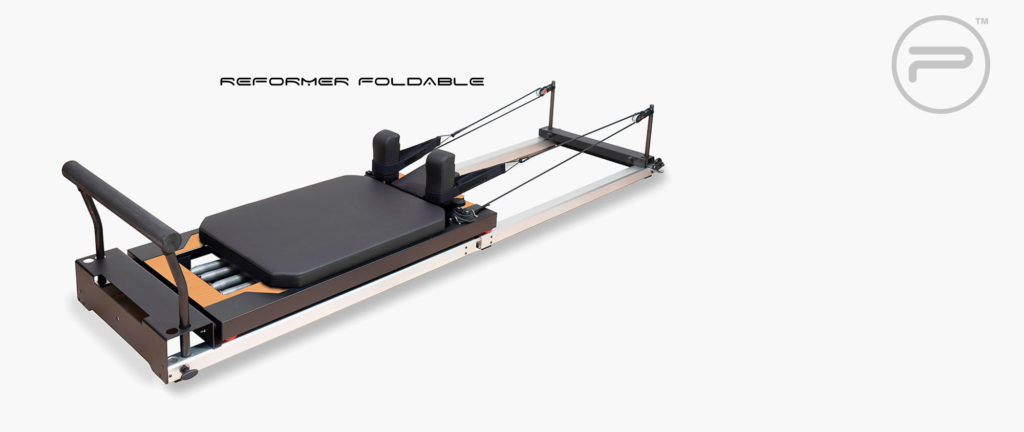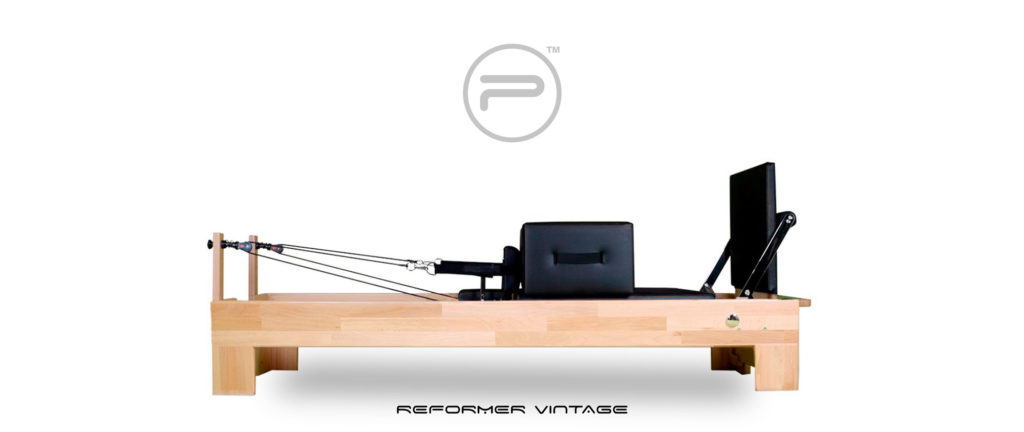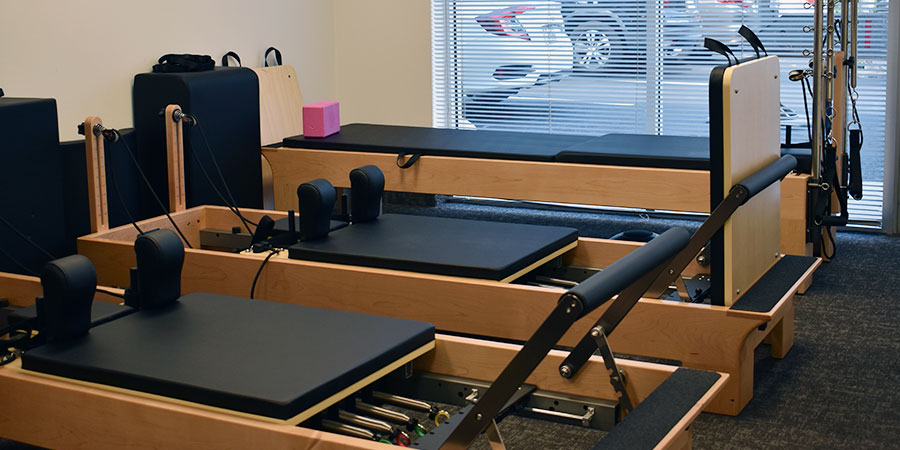Everything you need to know about the Pilates reformer machine — plus how to take some of the popular exercises out of class and onto a mat a home.
Chances are, you’ve heard of Pilates. The popular low-impact workout is comprised of a series of core exercises that helps flatten and tone your mid-section, as well as stabilize and support your spine and back.
Pilates mat classes are offered in mainstream gyms across America. But a different kind of Pilates — Pilates exercises performed on a reformer machine — has been picking up steam, too. This workout is great for people recovering from an injury or those looking to home in on precise core movements and isolate more muscles than in Pilates done on a mat. It is also a great option for low-impact recovery and injury rehabilitation. As for the cost, a class at Club Pilates (which has studios all over the country), will run you anywhere from $25-$35 depending on your location.
As a certified Pilates instructor, I recommend that people try a Pilates mat class first to learn the fundamentals without the added requirement of getting used to the reformer machine. Yet some people like to start immediately on the reformer to learn how to activate the core properly before even stepping foot on to a mat for a Pilates class. But before you hop on the reformer, here’s everything you need to know about what to expect in a class — plus how to take some of the popular exercises out of class and onto a mat a home.

What is a Pilates Reformer?
The reformer was invented by Joseph Pilates and is a bed-like frame with a flat platform that rolls back and forth on wheels. “It is an apparatus used as a part of a Pilates exercise session under the direction of an instructor that uses springs for assistance and resistance to achieve proper muscle length and strength in an organized way,” says Julie O’Connell, PT, DPT at Athletico Physical Therapy. “The reformer assists the individual in achieving the goals of Pilates, which include the use of diaphragmatic breathing to organize the body’s posture through coordinated movements with an emphasis on postural control.”
The platform is called the carriage, and the carriage is attached to one end of the reformer by a set of springs. The springs allow you to adjust resistance to the carriage, which will be pushed and pulled along the frame by your own body weight and strength. There are also shoulder blocks on the carriage that keep you in a stable position so that you’re not sliding off of the end of the reformer .
There is a footbar at the end of the reformer — an adjustable bar that holds the springs. Your feet and hands can be placed on this bar depending on the exercise. The reformer also has long straps with handles on them that your feet or hands can be placed in to; these are at the top of the frame opposite of the footbar. The springs can be adjusted to affect both the footbar and the handles, to modify the workout for different skill levels and body types. In fact, the reformer is used not only by people looking to strengthen their core, but also by dancers for training and injury rehabilitation.
Is Pilates Reformer a good workout for you?
“The Pilates reformer is best for individuals who are seeking to achieve core stability and good postural alignment,” says O’Connell. According to Tianna Strateman, VP of Education for the Club Pilates, Pilates reformer can be a great workout for anyone. “Both the equipment and the exercises can be modified and adjusted to any body, which makes it perfect for those looking to tone up, rehab from an injury, train for a particular hobby or sport, or for those looking for low impact, full-body workout.”
Paula Lester, a Pilates/Group Fitness Instructor and Manager of the Pilates Studio at Privé-Swiss Fitness, agrees that Pilates reformer work is low-impact and adaptable to all fitness levels. “It benefits everyone from teenagers to seniors and elite athletes to people with a more sedentary lifestyle,” she says. “Pilates reformer work focuses on core strength and proper muscle engagement which improves athletic performance, back pain, injury recovery, weight loss, balance, bone density and posture to name a few. It is a movement system designed to better our everyday life and well being.” As a Pilates instructor myself, my sister often comes to me for workout advice. During her pregnancy, we discussed working out on the reformer with a private instructor so that she could properly isolate her core muscles without rolling around on the mat. The reformer gave her more control and stability during her pregnancy.

But that doesn’t mean there aren’t some restrictions to be aware of. “There are requirements for participants to be able to tolerate lying down flat on your back to participate on a Pilates reformer ,” says O’Connell. “For pregnant patients, in the third trimester, it is not recommended to lie down on your back for prolonged periods.”
And people with other spinal or neck issues may need to be aware of proper modifications, she adds. Always speak to your doctor before starting any exercise program — and be sure to tell your instructor if you have any injuries. “If any of the exercises recommended by the instructor cause pain, then communicating with the instructor is important and the exercise should be stopped. It is important to listen to your body and adjust the amount of resistance through changing the springs, and modifying the positions to allow for proper alignment,” O’Connell explains.
What results can you expect to see?
The reformer accommodates a full range of motion, which is great for increasing flexibility while building strength. The pushing and pulling with the arms and legs against the resistance of the springs, carriage and body weight makes this a unique strength-building full-body workout that’s different from the regular Pilates exercises performed on the mat. Specifically, when you hold the cables in your hands or put your feet in the cables, you allow your muscles to extend to the fullest position. And while mat Pilates does include some exercises that work the legs and arms, they’re usually done with no resistance unless you’re using light dumbbells or a Pilates ring as an accessory. The reformer is able to target your arms and legs while still focusing on the core, providing a more comprehensive workout.
According to one study, Pilates reformer exercises performed once per week for 10 weeks resulted in reduced fall risk and significant improvements in static and dynamic balance and functional mobility in adults age 65 and older at risk for falling. Another study showed that after twelve sessions of Pilates with the reformer equipment, there were improvements in lower back and shoulder strength.
O’Connell says that you can expect to see increases in flexibility, muscular strength and muscular endurance with an improved mind-body connection. “Visually, you will see strong and lean muscles with improved posture. With the focus on core stability and total body strength, Pilates will help to facilitate muscle activation and development to support proper spinal alignment,” she explains.
I have had a few clients that swear by Pilates reformer workouts. I recommend that they do 2-3 sessions a week to really work on leaning out the body. It’s great for building the smaller core muscles, and also stretching out the longer muscles in the body. In fact, many of my clients see weight loss as a result of their reformer classes and feel that their posture has transformed because of it.
By Stephanie Mansour
https://www.nbcnews.com/better/lifestyle/reformer-pilates-what-it-who-it-s-best-how-do-ncna1094436








